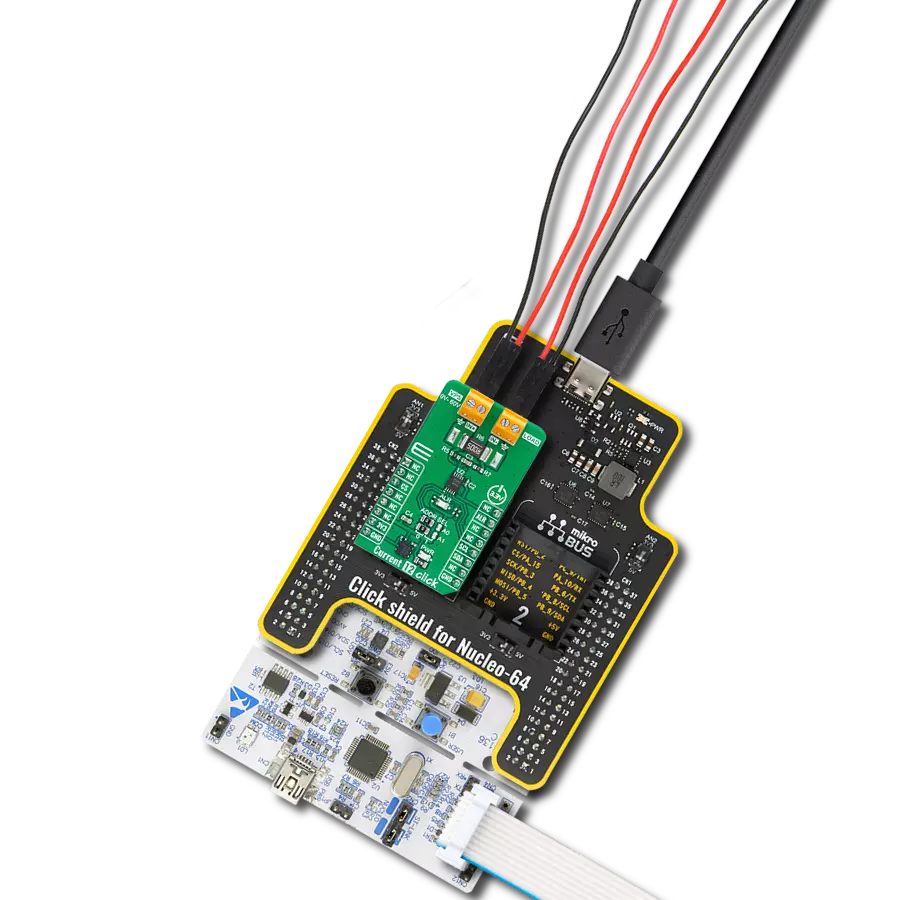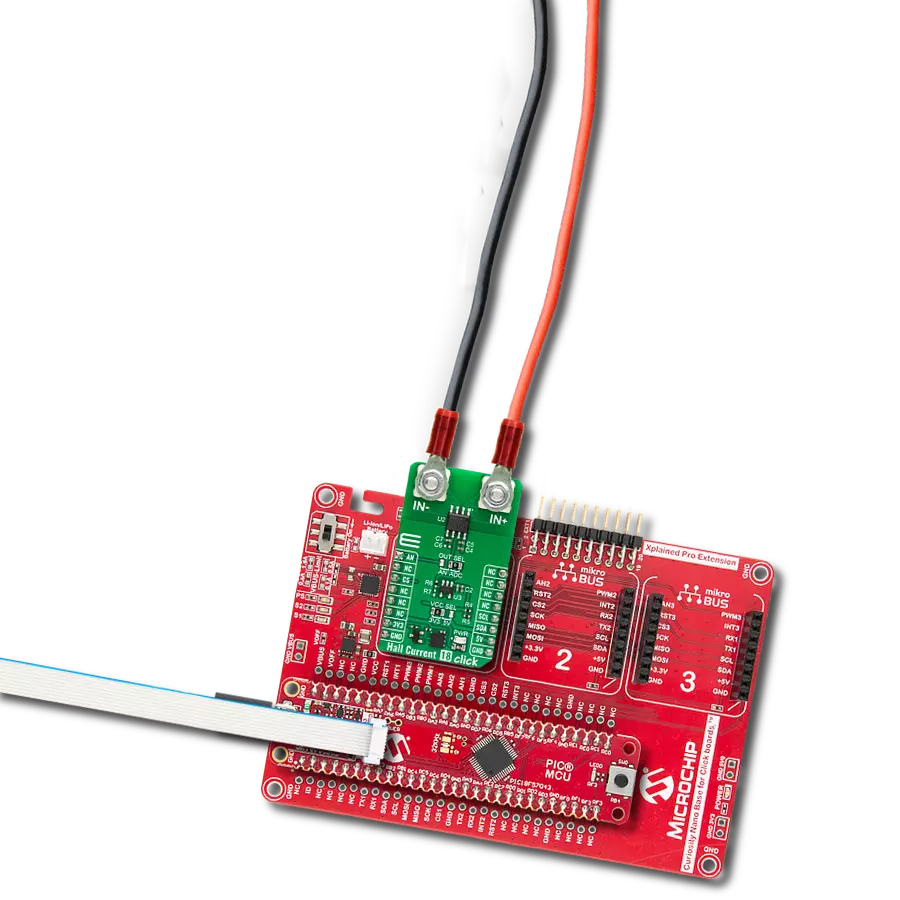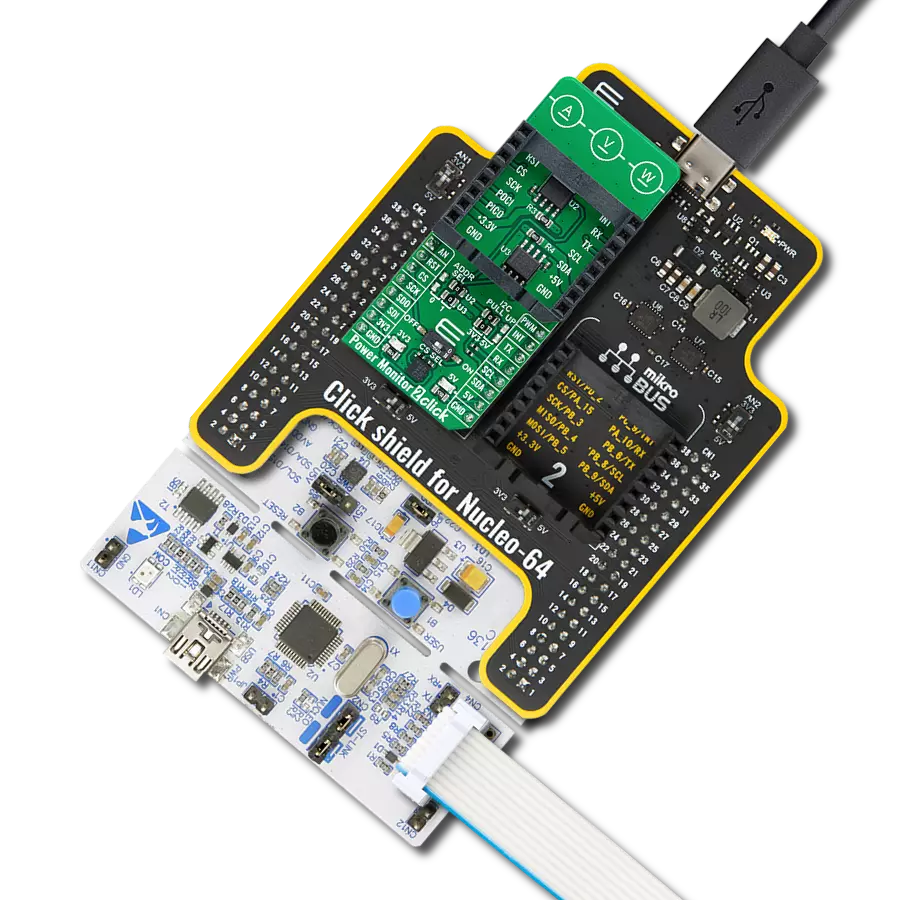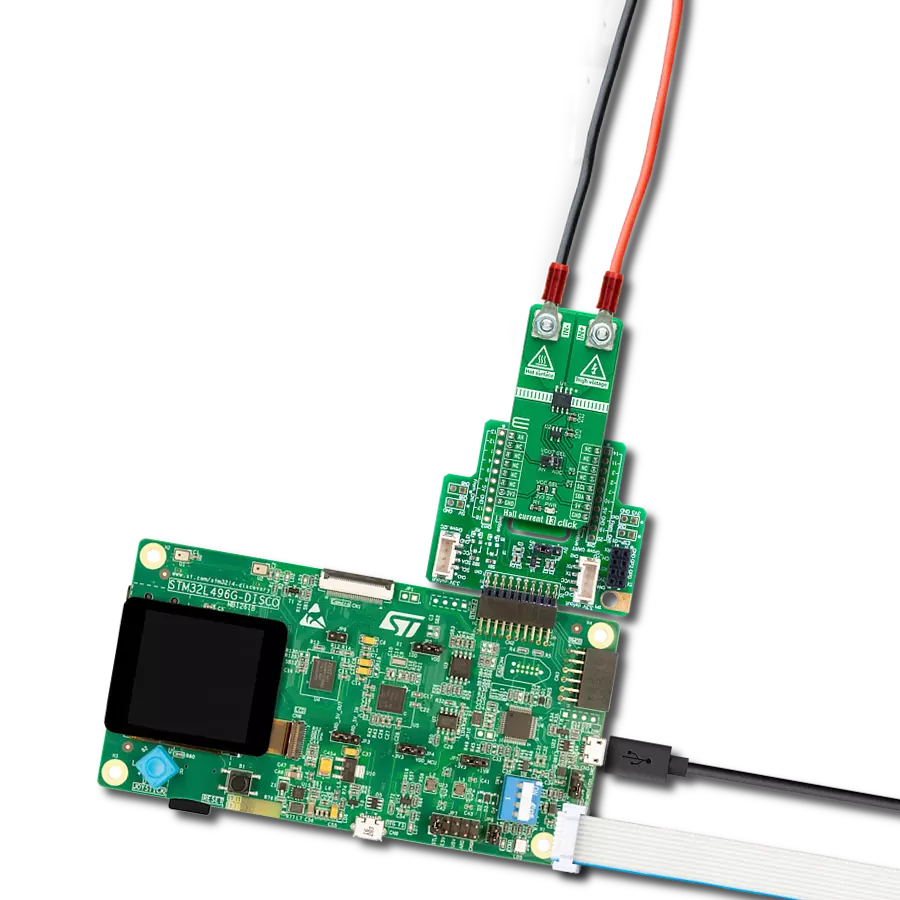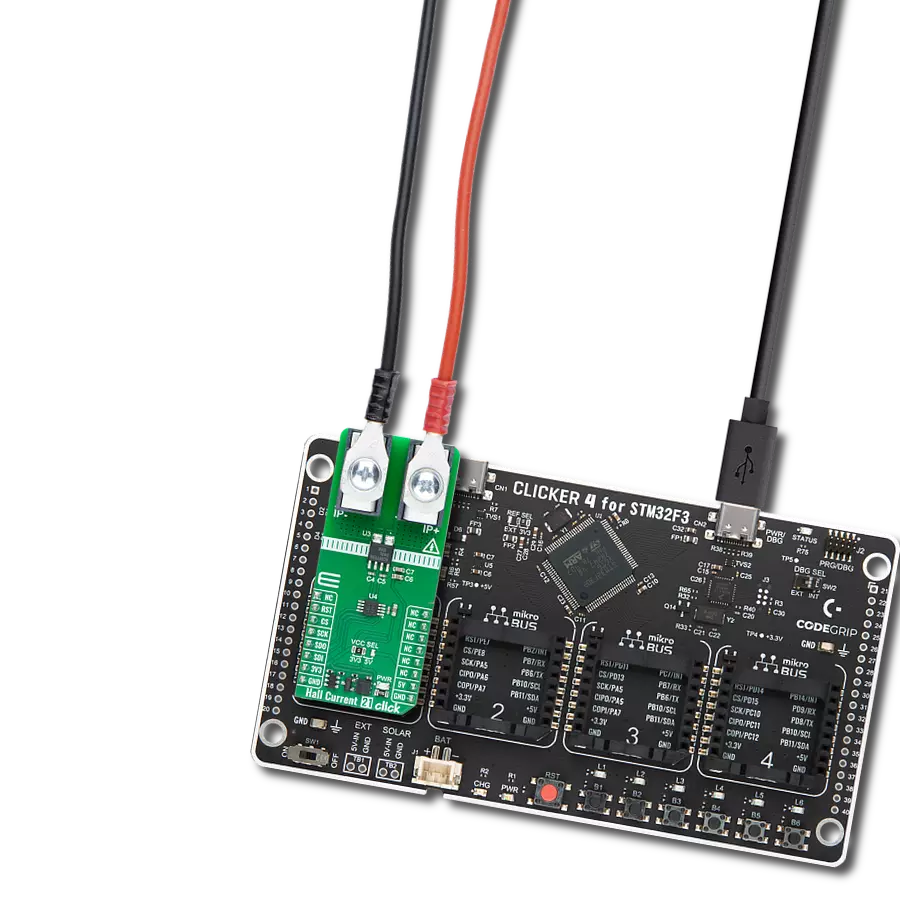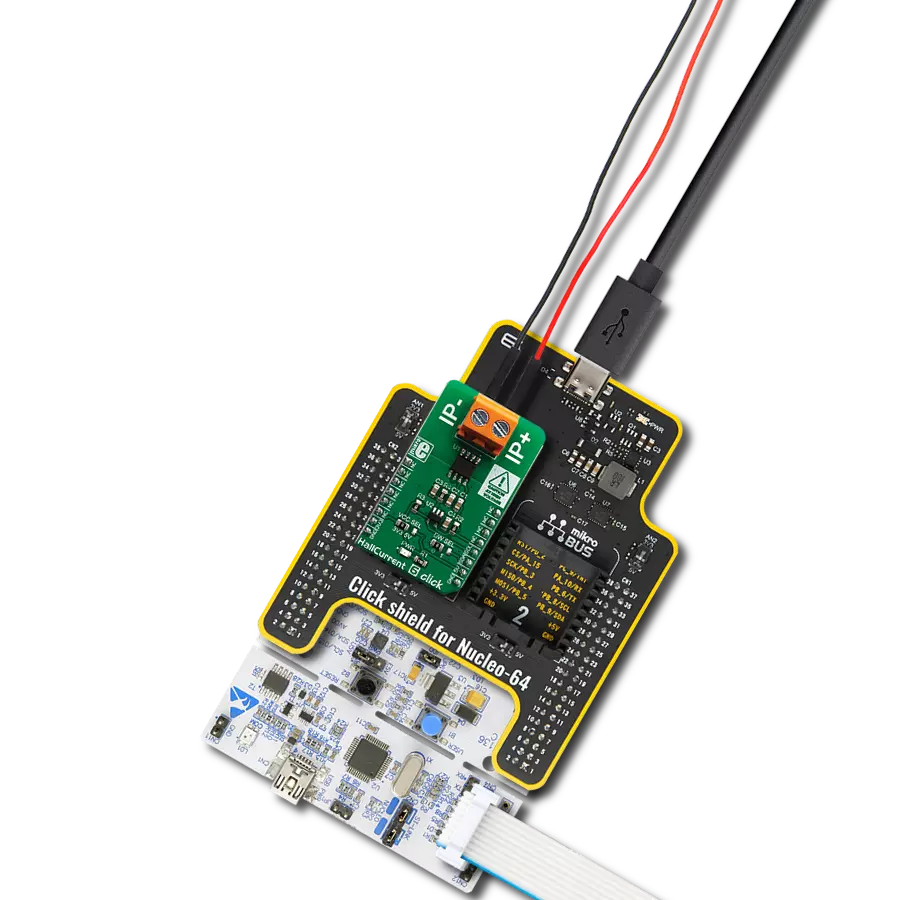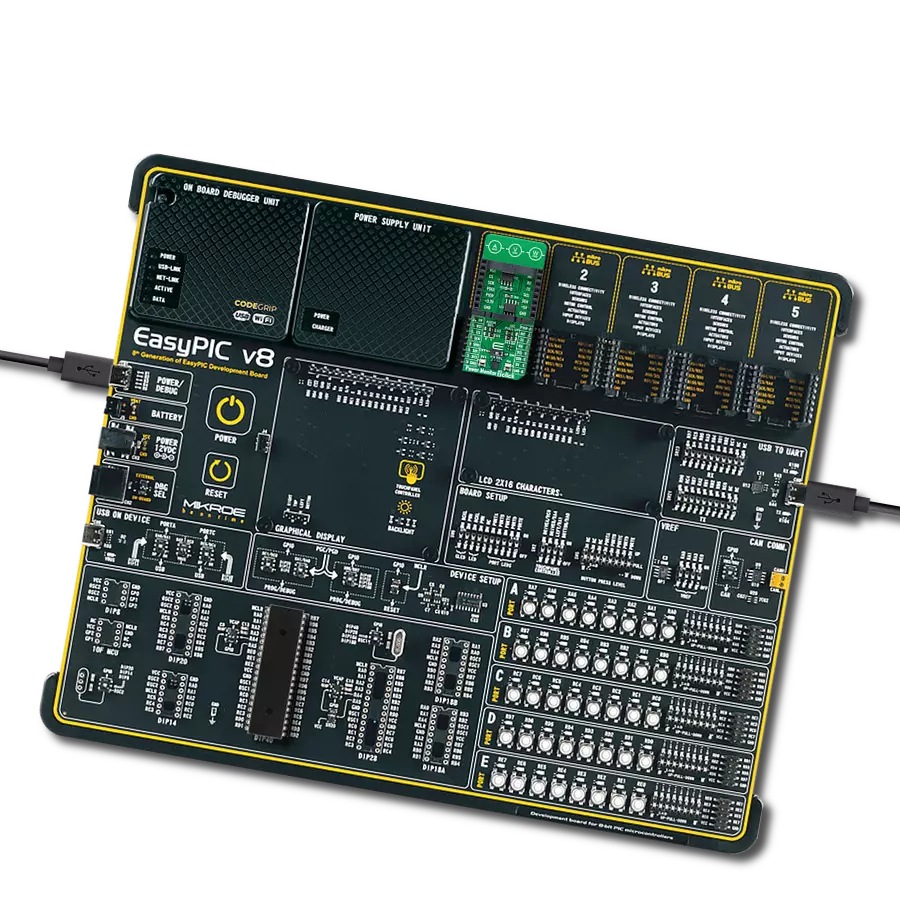监测工业机器和设备的电流消耗
A
A
硬件概览
它是如何工作的?
Current 14 Click 基于来自 ROHM 半导体的 BM14270 (BM14270AMUV-LB) 磁性电流传感器 IC。专为工业市场的长期支持而设计,这种无核、非接触式电流感应解决方案使用磁性 MI(磁阻抗)传感器,能够在最小的功率损耗下实现精确的电流测量。其非侵入式设计使其能够测量导体中流动的电流而无需直接接触,从而高效且适用于各种应用场景。该 Click board™ 是需要精确电流监测而不向电路引入额外负载或损耗的理想解决方案,能够在要求苛刻的环境中提供强大的支持。Current 14 Click 使用标准的 2
线 I2C 通信协议,使主控 MCU 能够控制 TSC1641。I2C 接口支持高达 400kHz 的时钟频率,并可以通过 ADDR SEL 跳线选择 I2C 地址。数据输出通过 I2C 接口以 14 位数字格式提供,在电流检测中提供高精度。传感器的磁测量范围可达 ±280μT(典型值),具有 0.045μT/LSB 的磁灵敏度,能够在各种应用中实现精细可靠的测量。这种能力尤其适用于工业设备监控、电力测量仪表、不间断电源 (UPS) 和电力调节系统。此 Click board™ 还包括一个警报中断引脚 ALR,作为数据准备指示器。除了标准的接口引脚
外,ALR 引脚在有新测量数据时发出信号,简化了数据采集过程,并确保主控 MCU 实时更新。这一功能增强了该板在实时监控应用中的响应性,特别适合动态系统中需要精确和即时电流数据的场景。此 Click board™ 可在 3.3V 或 5V 逻辑电压电平下运行,可通过 VCC SEL 跳线选择电压。这种设计确保 3.3V 和 5V 的 MCU 均可正常使用通信线路。此外,该 Click board™ 配有易于使用的函数库和示例代码,供进一步开发参考。
功能概述
开发板
Curiosity PIC32 MZ EF 开发板是一个完全集成的 32 位开发平台,特点是高性能的 PIC32MZ EF 系列(PIC32MZ2048EFM),该系列具有 2MB Flash、512KB RAM、集成的浮点单元(FPU)、加密加速器和出色的连接选项。它包括一个集成的程序员和调试器,无需额外硬件。用户可以通过 MIKROE
mikroBUS™ Click™ 适配器板扩展功能,通过 Microchip PHY 女儿板添加以太网连接功能,使用 Microchip 扩展板添加 WiFi 连接能力,并通过 Microchip 音频女儿板添加音频输入和输出功能。这些板完全集成到 PIC32 强大的软件框架 MPLAB Harmony 中,该框架提供了一个灵活且模块化的接口
来应用开发、一套丰富的互操作软件堆栈(TCP-IP、USB)和易于使用的功能。Curiosity PIC32 MZ EF 开发板提供了扩展能力,使其成为连接性、物联网和通用应用中快速原型设计的绝佳选择。
微控制器概述
MCU卡片 / MCU

建筑
PIC32
MCU 内存 (KB)
2048
硅供应商
Microchip
引脚数
100
RAM (字节)
524288
使用的MCU引脚
mikroBUS™映射器
“仔细看看!”
Click board™ 原理图

一步一步来
项目组装
实时跟踪您的结果
应用程序输出
1. 应用程序输出 - 在调试模式下,“应用程序输出”窗口支持实时数据监控,直接提供执行结果的可视化。请按照提供的教程正确配置环境,以确保数据正确显示。

2. UART 终端 - 使用UART Terminal通过USB to UART converter监视数据传输,实现Click board™与开发系统之间的直接通信。请根据项目需求配置波特率和其他串行设置,以确保正常运行。有关分步设置说明,请参考提供的教程。

3. Plot 输出 - Plot功能提供了一种强大的方式来可视化实时传感器数据,使趋势分析、调试和多个数据点的对比变得更加直观。要正确设置,请按照提供的教程,其中包含使用Plot功能显示Click board™读数的分步示例。在代码中使用Plot功能时,请使用以下函数:plot(insert_graph_name, variable_name);。这是一个通用格式,用户需要将“insert_graph_name”替换为实际图表名称,并将“variable_name”替换为要显示的参数。

软件支持
库描述
This library contains API for Curr Click driver.
Key functions:
example1- Exampleexample2- Exampleexample3- Example
开源
代码示例
完整的应用程序代码和一个现成的项目可以通过NECTO Studio包管理器直接安装到NECTO Studio。 应用程序代码也可以在MIKROE的GitHub账户中找到。
/*!
* @file main.c
* @brief Current 14 Click example
*
* # Description
* This example demonstrates the use of Current 11 Click board by reading and
* displaying the input current measurements.
*
* The demo application is composed of two sections :
*
* ## Application Init
* Initializes the driver and calibrates the zero current offset and data resolution
* at 3A load current.
*
* ## Application Task
* Reads the input current measurements and displays the results on the USB UART
* approximately once per second.
*
* @author Stefan Filipovic
*
*/
#include "board.h"
#include "log.h"
#include "current14.h"
static current14_t current14;
static log_t logger;
void application_init ( void )
{
log_cfg_t log_cfg; /**< Logger config object. */
current14_cfg_t current14_cfg; /**< Click config object. */
/**
* Logger initialization.
* Default baud rate: 115200
* Default log level: LOG_LEVEL_DEBUG
* @note If USB_UART_RX and USB_UART_TX
* are defined as HAL_PIN_NC, you will
* need to define them manually for log to work.
* See @b LOG_MAP_USB_UART macro definition for detailed explanation.
*/
LOG_MAP_USB_UART( log_cfg );
log_init( &logger, &log_cfg );
log_info( &logger, " Application Init " );
// Click initialization.
current14_cfg_setup( ¤t14_cfg );
CURRENT14_MAP_MIKROBUS( current14_cfg, MIKROBUS_1 );
if ( I2C_MASTER_ERROR == current14_init( ¤t14, ¤t14_cfg ) )
{
log_error( &logger, " Communication init." );
for ( ; ; );
}
if ( CURRENT14_ERROR == current14_default_cfg ( ¤t14 ) )
{
log_error( &logger, " Default configuration." );
for ( ; ; );
}
log_printf( &logger, " Calibrating zero current offset in 5 seconds...\r\n" );
log_printf( &logger, " Make sure no current flows through the sensor during the calibration process.\r\n" );
for ( uint8_t cnt = 5; cnt > 0; cnt-- )
{
log_printf( &logger, " %u\r\n", ( uint16_t ) cnt );
Delay_ms ( 1000 );
}
if ( CURRENT14_ERROR == current14_calib_offset ( ¤t14 ) )
{
log_error( &logger, " Calibrate offset." );
for ( ; ; );
}
log_printf( &logger, " Offset calibration DONE.\r\n\n" );
log_printf( &logger, " Calibrating data resolution in 5 seconds...\r\n" );
log_printf( &logger, " Keep the load current set at 3A during the calibration process.\r\n" );
for ( uint8_t cnt = 5; cnt > 0; cnt-- )
{
log_printf( &logger, " %u\r\n", ( uint16_t ) cnt );
Delay_ms ( 1000 );
}
if ( CURRENT14_ERROR == current14_calib_resolution ( ¤t14, 3.0f ) )
{
log_error( &logger, " Calibrate resolution." );
for ( ; ; );
}
log_printf( &logger, " Data resolution calibration DONE.\r\n" );
log_info( &logger, " Application Task " );
}
void application_task ( void )
{
float current = 0;
if ( CURRENT14_OK == current14_get_current ( ¤t14, ¤t ) )
{
log_printf ( &logger, " Current: %.3f A\r\n\n", current );
}
}
int main ( void )
{
/* Do not remove this line or clock might not be set correctly. */
#ifdef PREINIT_SUPPORTED
preinit();
#endif
application_init( );
for ( ; ; )
{
application_task( );
}
return 0;
}
// ------------------------------------------------------------------------ END



















